Bears get 21st-century home
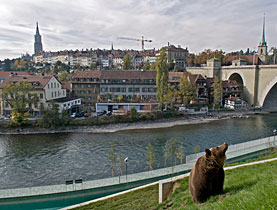
After nearly two years' construction, one of the Swiss capital Bern's top attractions, the city's bears, have moved into a new – and more animal friendly – park.
The park opened to the public on Sunday, attracting thousands of visitors. swissinfo.ch went along ahead of the official opening to take a look.
The week before the park opened, young and old residents and visitors to Bern were already lining up along the Nydegg Bridge to look down for signs of life in the new, enlarged enclosure.
“Where bear?” a group of Chinese tourists asks the other people craning their necks to spot the animals. The bears are keeping out of sight for the time being.
For the park’s director, Bernd Schildger, this is hardly surprising since the animals are of a cautious nature. The new surroundings have unsettled the bears, Björk and Finn, who recently moved there from the city’s zoo, he adds.
The park is a new territory for them, which might have been previously occupied by other bears. “It’s the biggest step for any bear to make,” Schildger told swissinfo.ch.
The bears, prominent on the city’s coat of arms, should have an easier life in the new park, which replaces the 142-year-old pit. The pit, which has been integrated into the park, is 3.5 metres deep and no longer complies with animal protection standards.
The old space had become what one elderly lady on the bridge called a “disgrace”. A friend with her told swissinfo.ch that she had been “ashamed” for the city. The new enclosure is a vast improvement over the pit – a surface of over 10,000 square metres for the bears to roam in and includes caves and a pool along the River Aare.
Standing next to the old pit, a young man from Bern says it was a “blot on the landscape”. “The bears – even old Pedro who died recently – were kept in something like a dungeon,” he added.
According to some locals, even foreign tourists had complained to the Bern tourism office about the conditions the bears were kept in.
A few years ago, animal protection wasn’t on the agenda, remembers another elderly lady. When she was young, she was happy to go to the bear pit and feed the animals carrots.
“They would jump around so that people would throw them food,” she said. But she also admits that the new park will be a much better residence for the animals.
Tourist magnet?
Local tourism specialists are hoping that at least as many visitors as in the past will stop off at the bear park.
“Up until now, there had been around one million visitors to the bear pit,” said Marcel Graf, who has been overseeing Bern Tourism’s bear park project. “We reckon there will be more people visiting and spending more time at the Bear Park, because they’ll need to work their way around it to discover and observe the animals.”
Graf expects there will be as many Swiss as foreign visitors. The project has been widely covered by the local media, and people will want to see it for themselves.
Bern Tourism has been promoting the park locally, including in schools under the banner the “Bern Bear Workshop”.
The tourist office has also been trying to drum up business abroad. “We plan to market the workshop or something similar in Germany, especially in Berlin where the relationship with bears, which is also on the city’s coat of arms, is strong like it is here in Bern,” Graf told swissinfo.ch.
Road show
The office also plans to launch a promotional campaign across Europe, starting in Berlin early next year and eventually moving to London.
Schools will again be targetted. “In Germany and Britain there will a poster competition and we will also be making presentations at various zoos,” added Graf.
Britain is particularly important for Graf, because of the perceived strength of animal rights activists. The aim is to make people forget the negative image of the old pit by showing off the advantages of the new park.
For the main sponsor of the park, an insurance company, and the city, the presence of such a site in the centre of a town such as Bern where bears can live is unique. An assertion they say is borne out by positive reactions from the media and the public before the park even opened.
But the city faces a hefty bill for its new attraction. The final cost of SFr24.5 million ($24.3 million) is nearly SFr10 million over budget, causing some red faces in the administration.
The two bears who have taken up residency in the park – Björk and Finn – couldn’t care less though. What matters most to them is making their new space home sweet home.
Jean-Michel Berthoud, swissinfo.ch (Translated from German by Scott Capper)
Initial budget: SFr9.7 million
Construction budget: SFr14.7 million
Actual cost: SFr24.5 million
Reasons for the cost overrun include geological problems along the River Aare.
Bears have a long association with Bern. According to legend, the founder of Bern, Berchtold V von Zähringen, named his new city after the first animal he killed in a hunt near the site of the bear pit.
It was a bear – or Bär in German. This is why the city’s coat of arms features a bear. Bears have been kept in Bern for around 500 years.
There are a number of bear statues all over the city, including on several of the 16th-century fountains.

In compliance with the JTI standards
More: SWI swissinfo.ch certified by the Journalism Trust Initiative
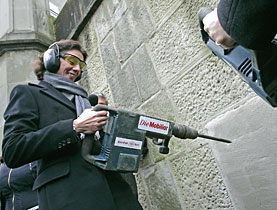
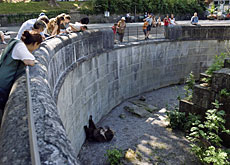
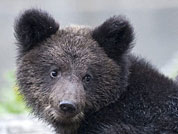
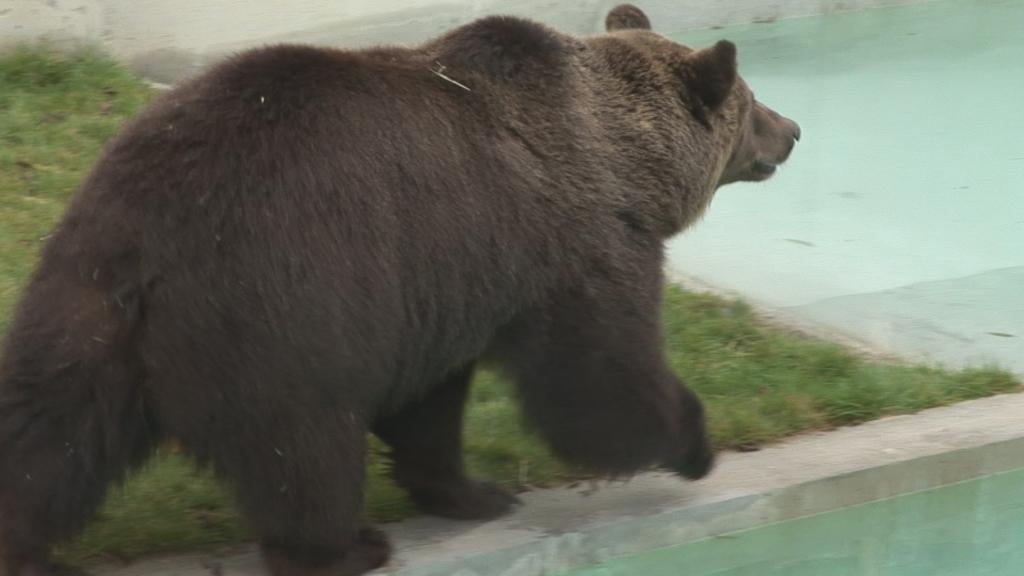
You can find an overview of ongoing debates with our journalists here. Please join us!
If you want to start a conversation about a topic raised in this article or want to report factual errors, email us at english@swissinfo.ch.